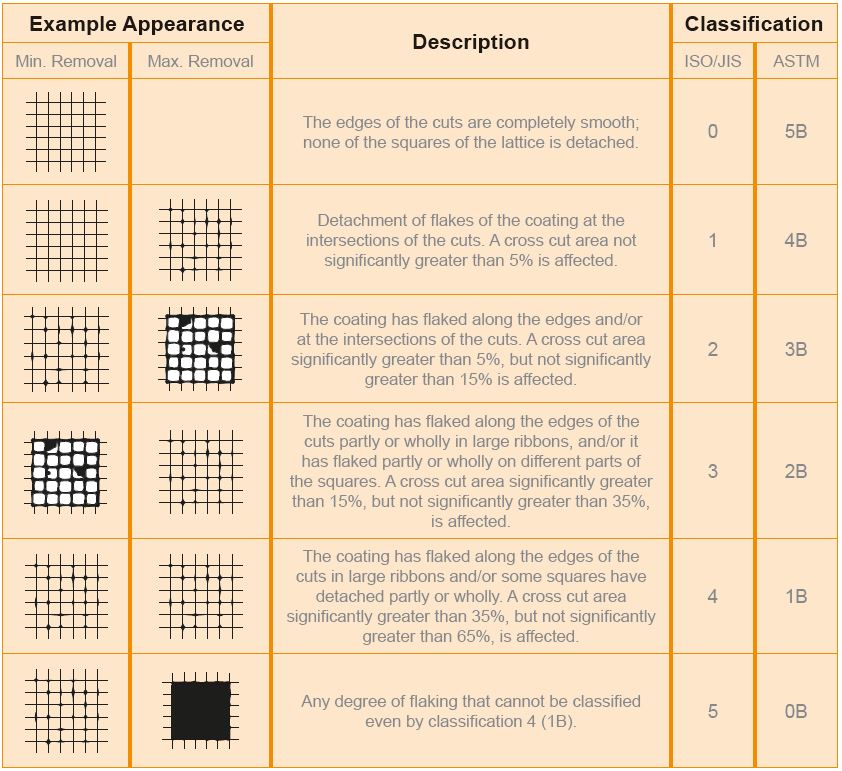
Cross Hatch Method
This basic and very subjective test method involves the user cutting an “X” through the coating, down to the substrate, using a sharp utility knife. The blade of the knife is then used to determine how easily the coating lifts off the substrate at the intersection point of the cut. ASTM D 6677 is the standard test method for evaluating adhesion by knife and contains a rating system table to evaluate the findings.
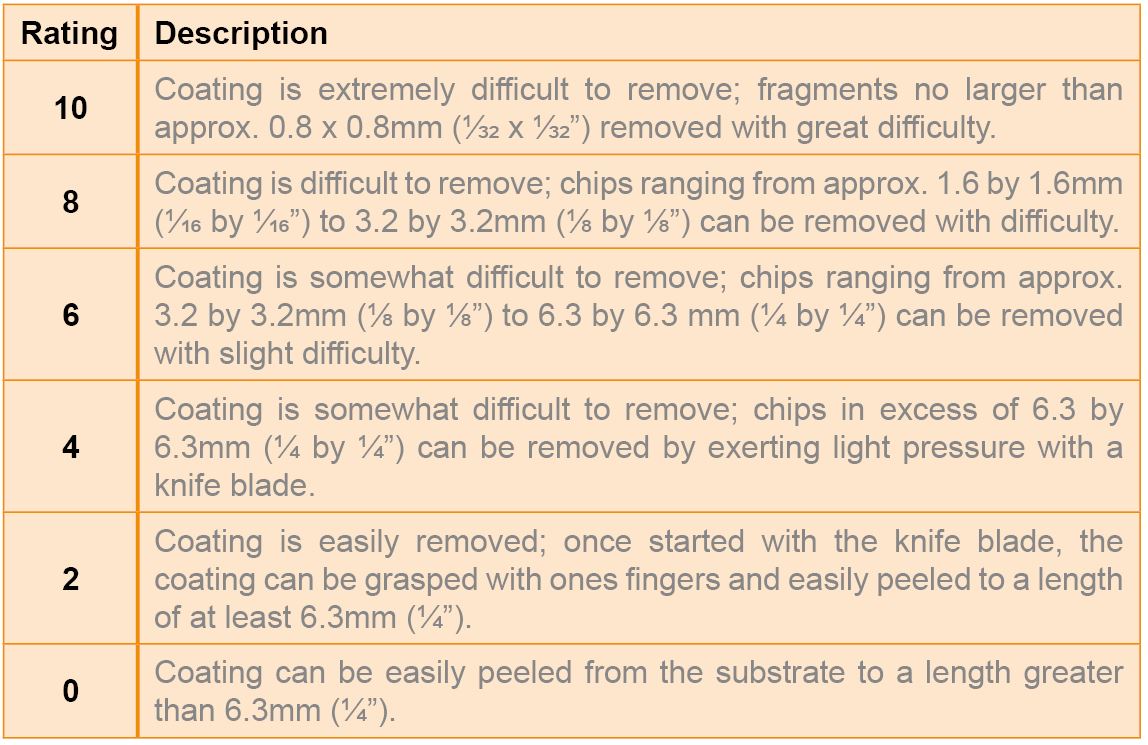
No value is put on the adhesion strength of the coating; it is merely an observational rating/comparison to a pre-determined set of parameters. This test relies on the interpretation of each individual tester and it is therefore possible for the results to differ from user to user.
A refinement of the knife method is the St. Andrews Cross Cut Test, so called as the cut angle simulates the white cross depicted on the Scottish National Flag of St. Andrew. Using a sharp utility knife, the user cuts a cross through the coating making sure that the angle between the cuts is 30 - 45° and each cut is approximately 40mm (1.57”) long.
Special adhesive tape (ISO or ASTM depending on the standard worked to) is applied, with a firm force, to the coating over the cross and pulled off at an angle specified in the standard to remove any loose coating. The scale shown is used to assess the adhesion. (It should be noted that the latest version of ISO 2409 does not now specify a tape strength).
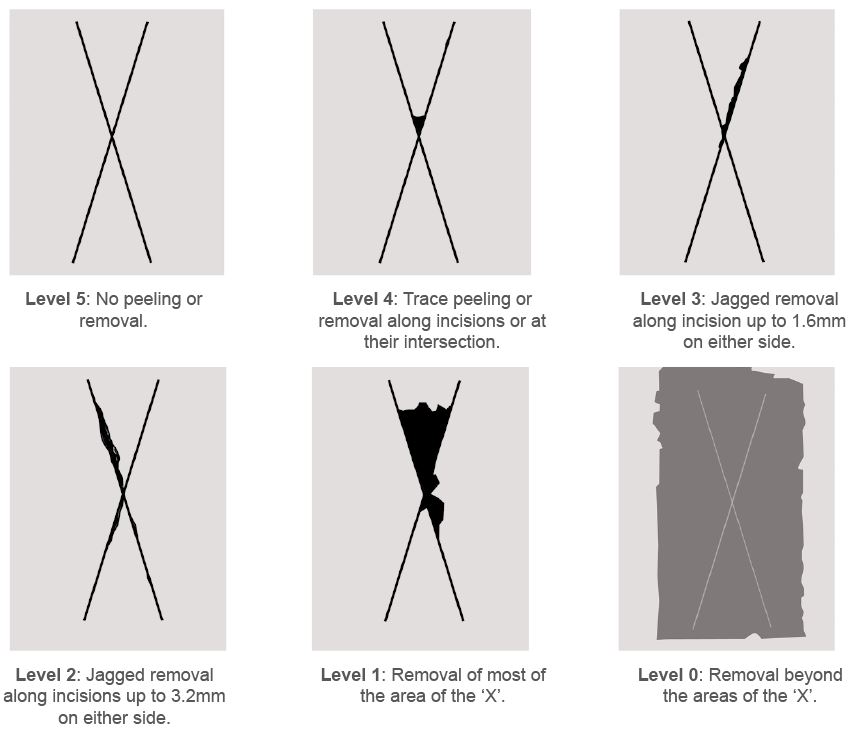
Cross Hatch Cutters
Further development of the cross cut method is the cross hatch method. A number of cuts are made at 90 degrees to each other, creating a checkerboard lattice and hence more intersections in the coating to assess.
Whilst it could be argued that users could use a utility knife and a straight edge, it is not recommended, as achieving up to 11 or 22 parallel and equally spaced clean cuts is almost impossible, very time consuming and potentially dangerous. For this reason, cross hatch cutters, such as the Elcometer 107 has been developed.
This cutter is essentially multiple cutters aligned parallel and spaced 1, 1.5, 2 or 3 mm apart. When using this cutter, is important that the user applies sufficient load to cut through the coating to the substrate and that the load is evenly applied across the width of the blade.
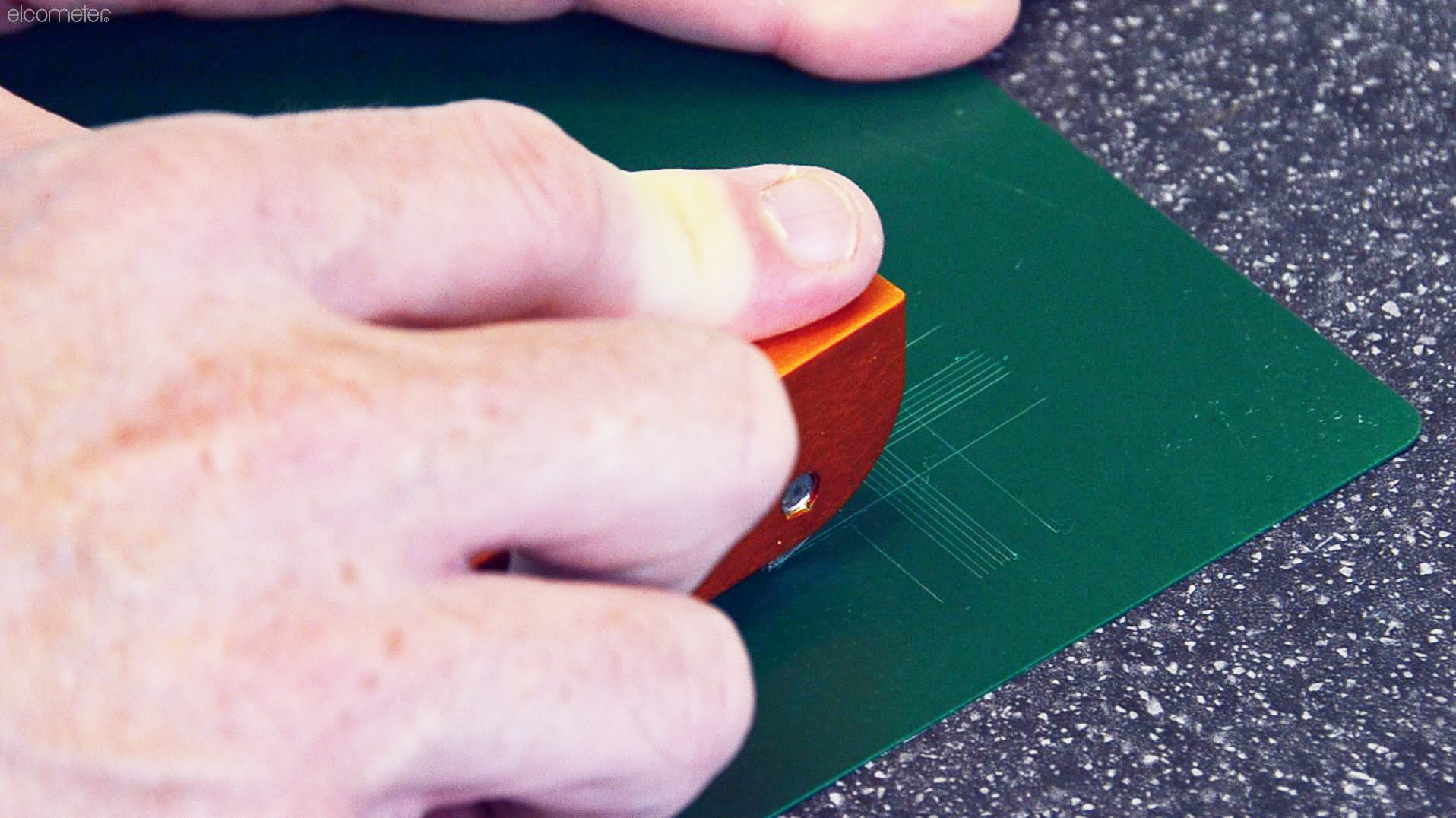
Cutters, such as the Elcometer 1542, ensure that these issues do not become a problem. The cutter handle has a wheel at the opposite end to the cutter. When placed on the surface, the applied load is distributed evenly, both along and across the handle ensuring consistency in the method.
In all cross hatch cutter methods the operator must ensure the cutter conforms to the test standard being applied. Standards specify the different tape to be used. The relevant kits are identified as ISO or ASTM kits. The number of blades and the spacing is relative to the thickness of the coating being tested, whichever standard is being used.
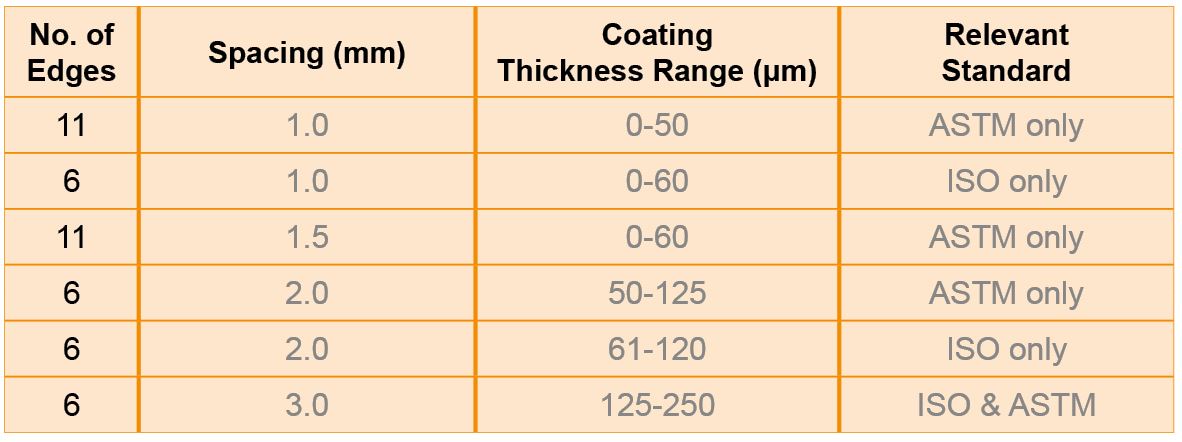
The Cross Hatch Method
1. Two complete turns of adhesive tape are removed from the roll of tape and a piece approximately 75mm should be cut from the roll.
The ASTM standard referenced the Permacell 99 tape as being suitable for the task. However, the Permacell 99 is now no longer available. Elcometer have sourced a replacement tape, Elcometer 99, which is comparable with the Permacell product.
The ISO standard, ISO 2409, was changed to specify a similar tape to that used in the ASTM tests, the difference being that it was to be 50mm wide and not 25mm wide, however as this tape was not commercially available, 25mm wide tape was used; with a note added to that effect when reporting the results.
ISO have “addressed” this issue by removing any tape specification from the standard. The standard now includes an appendix which states that the loose coating can be removed by brushing, adhesive tape or ‑ blowing using compressed air or nitrogen.
2. The cut piece of tape should be placed over the lattice and smoothed down firmly using a fingernail or fingertip to ensure good adhesion between the tape and the coating.
3. The tape is then pulled off the coating. The type of tape and the angle the tape is removed at is determined by the standard being used.
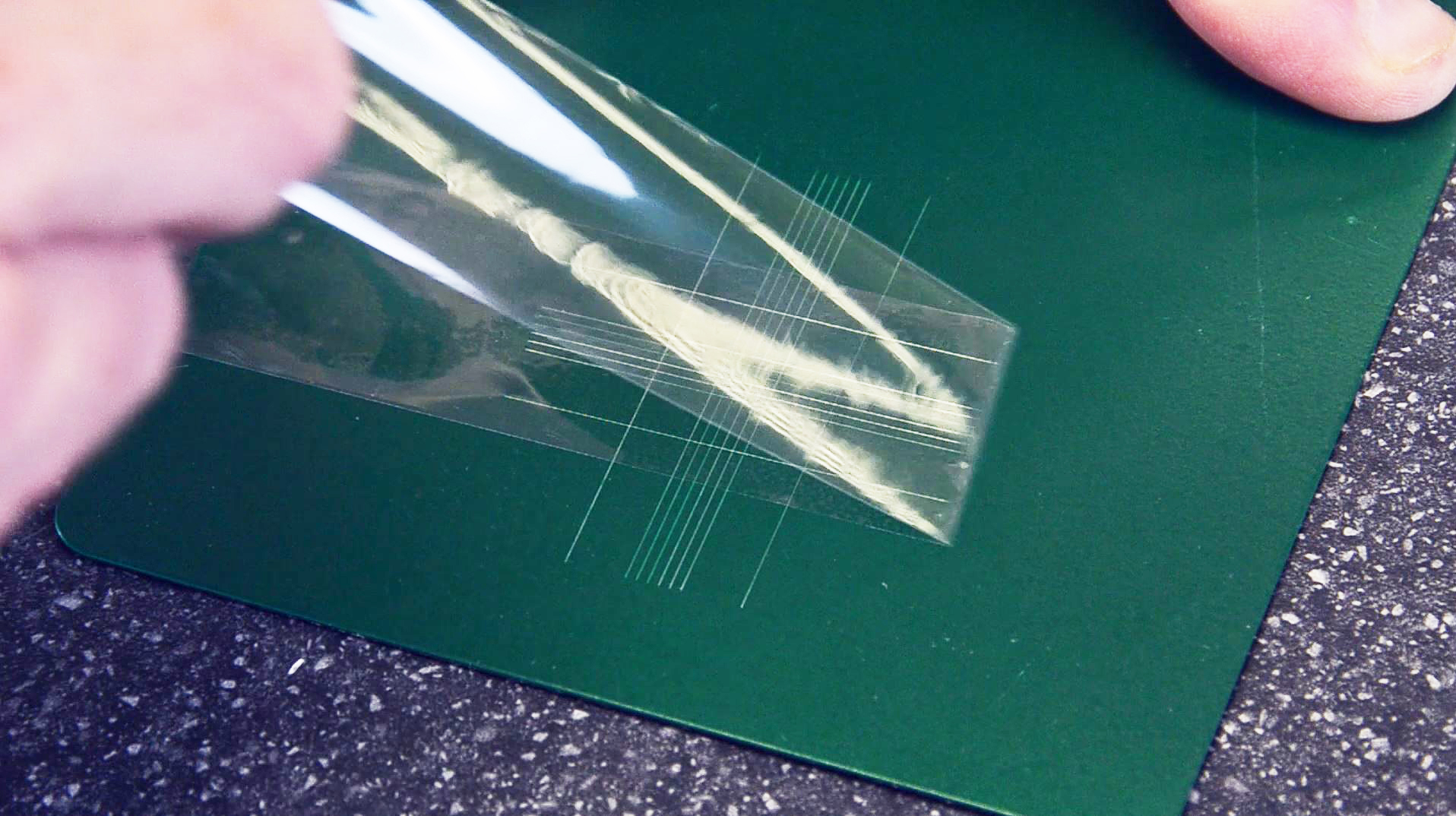
The coating is then assessed by the user and the degree of coating removal is determined by the inspector according to the standard used (ISO or ASTM), in accordance with the chart provided.
Note: while using the same pictorial references for the failure of the coating, the two standards actually assign a rating for the adhesion in the opposite manner. The ISO 0-5 represents best to worst whilst the ASTM 5B-0B represents best to worst.
